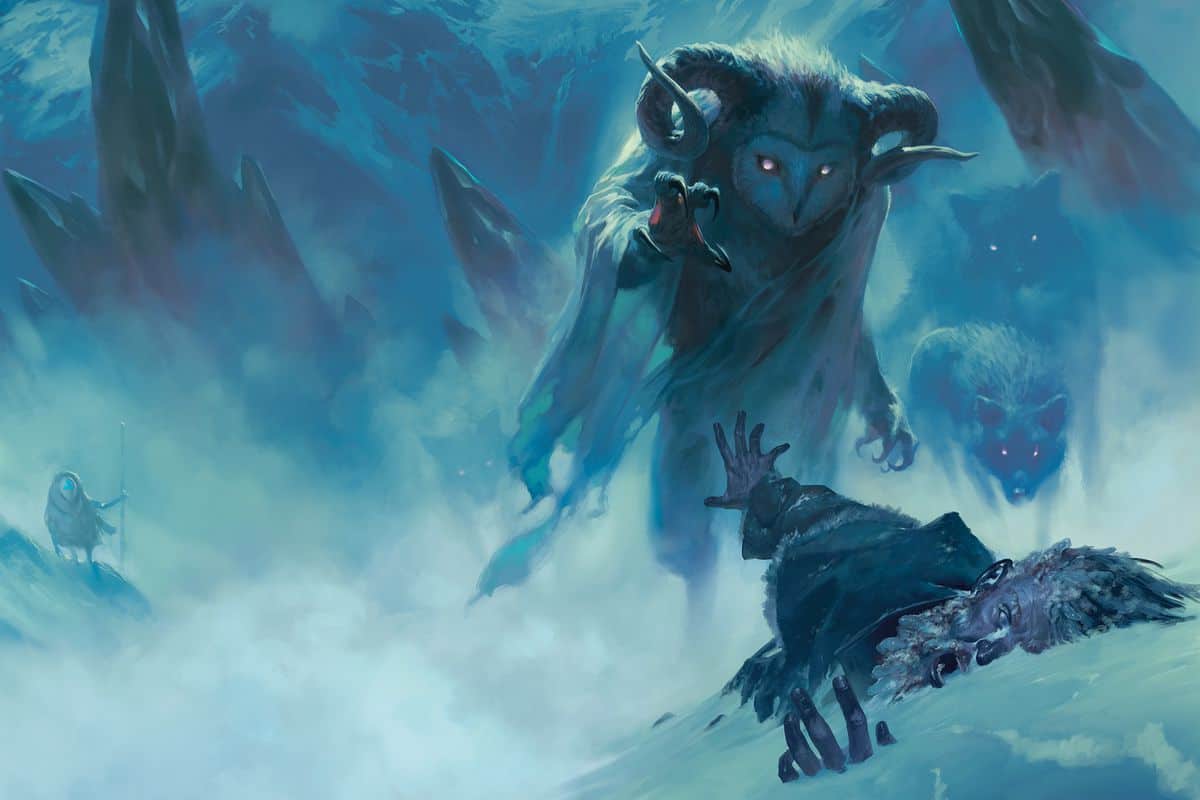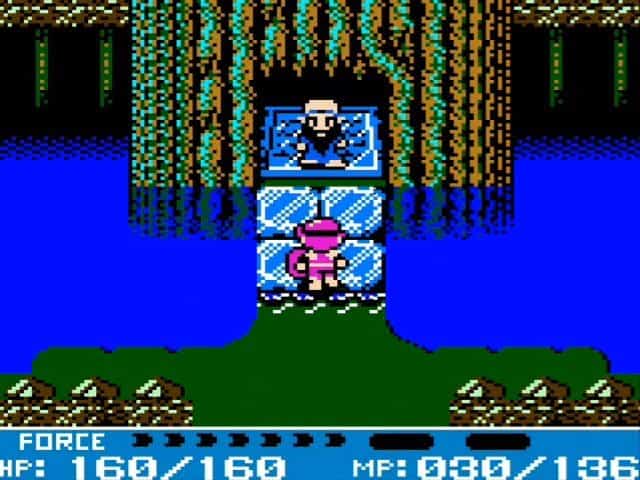The SNES and PlayStation are home to some of the greatest RPGs of all time, resulting in the 1990s being a golden era for the genre. However, not much would change as the ’90s gave way to the year 2000, with the RPG genre continuing to produce one landmark entry after the next on 5th-generation consoles and PCs. The arrival of the Dreamcast in 1999 as the first 6th generation console would bring with it several now iconic and legendary games in their own right, and the format that BioWare established with the original Baldur’s Gate in 1998 would also pave the way for a renaissance of CRPGs on Windows PCs at the turn of the millennium. As it turns out, the RPGs from 2000 are just as groundbreaking as any landmark titles from the years preceding it.
Between long-awaited sequels, beginnings of new franchises, or mainline entries in long-running franchises, 2000s best RPGs cut a large swath across some of the genre’s most iconic and beloved series. While there are plenty of JRPGs finding their way into the list of the best RPGs of the year, there are almost as many now-classic CRPGs that utilize the Dungeons & Dragons license to great effect, continuing to carry the torch for the original Baldur’s Gate and influencing the CRPG subgenre even into the modern era. And, in the case of more than a few of the best RPGs from 2000, some of these titles transcend their genres to be spoken of as among the most impactful and innovative games of all time.
Persona 2: Eternal Punishment
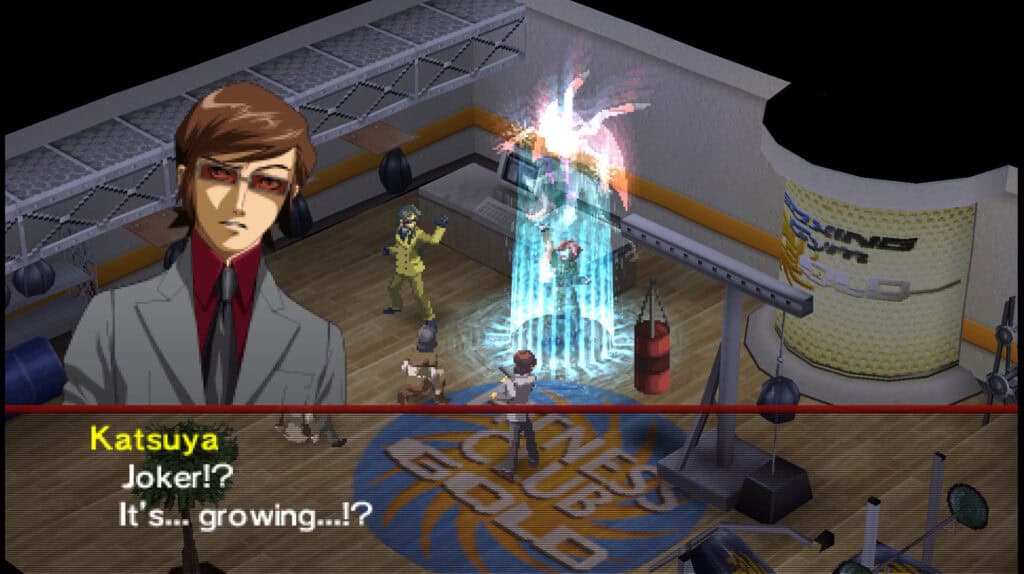
- Release Date — December 22, 2000
- Platforms — PlayStation
- Metacritic Score — 83% (Generally Favorable)
An offshoot of Atlus’ Shin Megami Tensei series, Persona mixes the turn-based RPG combat and monster-taming gameplay of Shin Megami Tensei along with a greater focus on social simulation and character interaction. While the second game in the series, Persona 2: Innocent Sin, represents a massive leap in quality over the spin-off series’ first entry (Revelations: Persona), it’s still a far cry from the modern Persona games that effectively begin with the excellent Persona 3. Still, Persona 2: Eternal Punishment is an excellent game and a worthy follow-up to Innocent Sin that smoothes out most of its rough edges and acts as the perfect “Persona 2.5″ for the series.
One of the first things that players noticed upon booting up Eternal Punishment is how much better the game looks in comparison to Revelations: Persona and even Persona 2: Innocent Sin, with character models and environments beginning to inch closer to what would eventually become the Persona series’ signature anime-inspired take. Additionally, the game’s script is a vast improvement over Innocent Sin, with Atlus putting more resources into the game’s localization. The Persona series would truly take off with Persona 3 on PSP and then Persona 4, but the franchise’s place as a cult-classic JRPG series begins with the excellent Eternal Punishment on PlayStation.
Grandia II
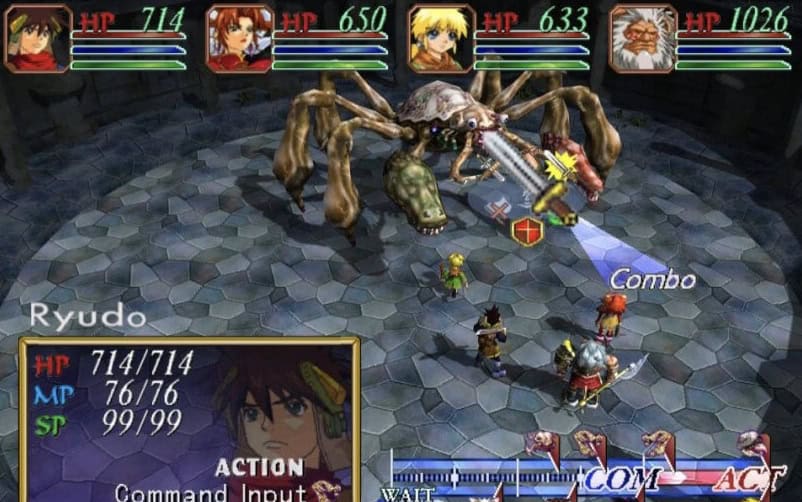
- Release Date — January 28, 2000
- Platforms — Dreamcast
- Metacritic Score — 90% (Universal Acclaim)
Though Grandia II would eventually find its way to the PlayStation 2 after the demise of the Dreamcast, the original version of this highly-anticipated RPG sequel on Sega’s ill-fated 6th-generation console is still the definitive release of an excellent JRPG. Unlike the first Grandia (which utilizes 2D character sprites over full 3D backgrounds and environments), Grandia II is the first full #D game in the series and a massive graphical upgrade over the original. Most of the team from the original Grandia would return to work on the sequel, utilizing the opportunity to present the vision for the series that the team always had. And, like the first Grandia, Grandia II‘s story is a historical mystery where the main character and his allies set out to uncover the true past of their world and the conflict that destroyed it.
Interestingly, combat in Grandia II is almost like a primitive version of what players would eventually experience in MMORPGs a few years later. Battles are turn-based, with an “IP Gauge” representing the beginning and ending of character and enemy actions. Characters’ stats determine where their placement on the gauge lands, and once a character’s turn begins, they can select an action and then freely move around a small 3D arena to gain advantages through positioning, occasionally gaining the opportunity for critical attacks. Now-legendary RPGs like Xenoblade Chronicles would eventually make use of a similar system, but Grandia II laid the groundwork more than a decade prior.
Skies of Arcadia
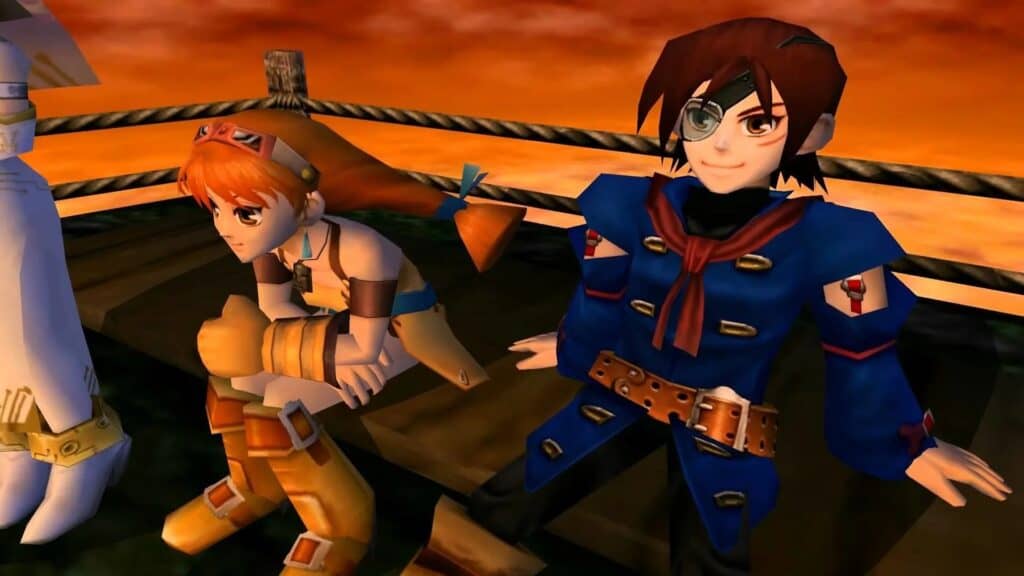
- Release Date — November 14, 2000
- Platforms — Dreamcast
- Metacritic Score — 93% (Universal Acclaim)
Other than Grandia II, Skies of Arcadia is one of the only Dreamcast-exclusive RPGs from 2000 and also happens to be one of the few first-party Sega games in the genre. Long considered to be one of the great hidden gems of both the RPG genre and the 6th generation, Skies of Arcadia is a brilliant and charming game with a captivating (yet comparatively lighthearted) story and some incredibly charming characters. In fact, the writing in Skies of Arcadia is so good and so refreshing in comparison to almost any other RPG from the era that the title still stands out as an exemplar of how a great RPG doesn’t have to take itself too seriously. And that’s without even mentioning the excellent mechanics that elevate Skies of Arcadia above many of its peers.
The main gameplay loop in Skies of Arcadia makes great use of the protagonist and his allies being sky pirates, separating a massive world map into 6 distinct regions that each house story quests, hidden treasure, dungeons, and plenty of other worthwhile distractions that the player can visit using their airship. However, the map starts out completely blank, meaning it’s up to players to chart Skies of Arcadia‘s engrossing world and explore to their heart’s content. Outside the exploration component, Skies of Arcadia is a mostly by-the-numbers RPG with turn-based combat and character progression, but it handles all the genre basics so well that its familiarity is in no way a knock against it.
Final Fantasy IX
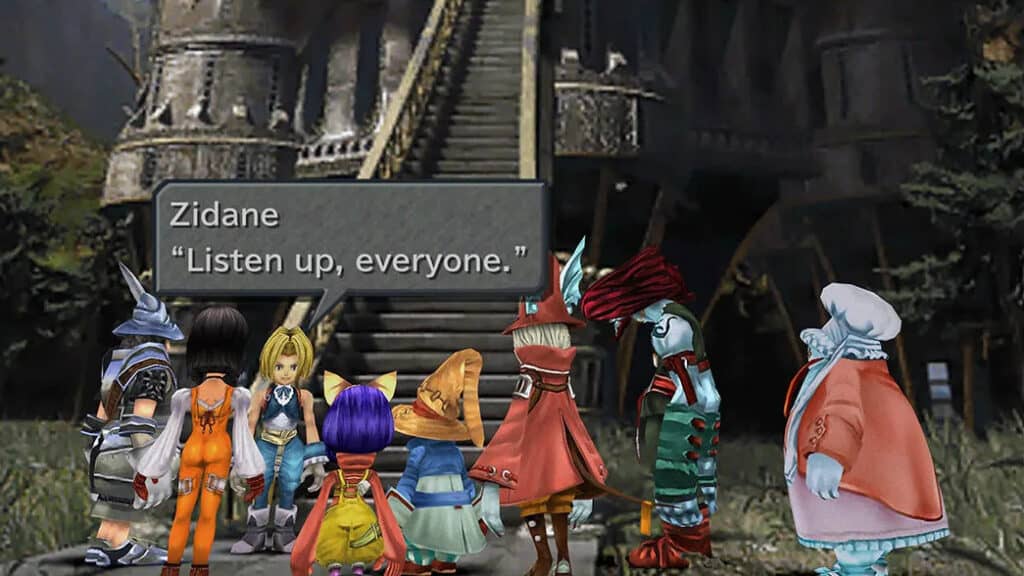
- Release Date — November 13, 2000
- Platforms — PlayStation
- Metacritic Score — 94% (Universal Acclaim)
It’s no wonder that Final Fantasy creator Hironobu Sakaguchi often cites Final Fantasy IX as his favorite game in the series, as it’s arguably the most authentic game in the series in terms of the franchise’s signature elements. Contrary to the two mainline entries preceding it, Final Fantasy IX takes players back to a world of myth and magic, ditching the steampunk, dystopian future aesthetic of Final Fantasy VII and VIII in favor of something more akin to the series’ origins. Along with that homage to the series’ past, though, Final Fantasy IX introduces one of the best casts of characters and stories in the series, some excellent and deep combat and character progression mechanics, and a world map with plenty of secrets to uncover and challenging enemies to fight.
And, lest we forget, the iconic soundtrack of Final Fantasy IX is about enough to elevate it to being one of the best games in the series, with longtime composer Nobuo Uematsu operating at the top of his game. Somehow, Uematsu is able to craft an emotionally impactful score that pays homage to the series’ past while introducing some new compositions that immediately become legendary in their own right. Final Fantasy IX also makes the best use of the PlayStation hardware to be the best-looking game in the trilogy of mainline titles released for the console, even if it does sometimes struggle to maintain a stable framerate as a result.
Breath of Fire IV
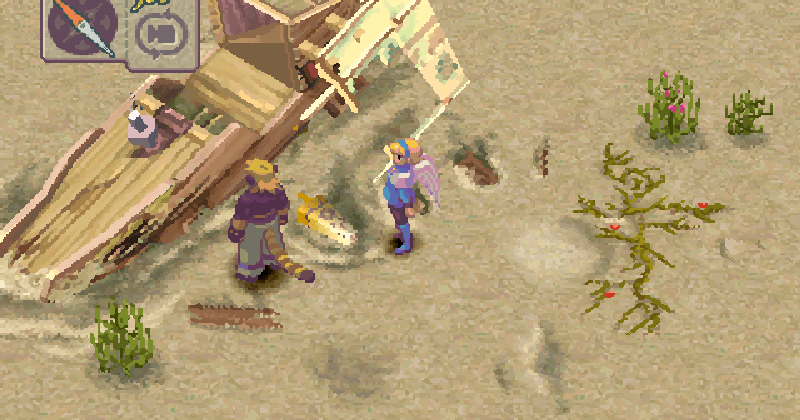
- Release Date — November 28, 2000
- Platforms -— PlayStation
- Metacritic Score — 83% (Generally Favorable)
Breath of Fire IV continues in the tradition of its predecessor (and of the entire Breath of Fire series) by being one of the greatest overlooked RPG games of the era. To be fair, Breath of Fire does have a decent amount of dedicated fans, but for whatever reason, the series never seemed to catch on like Final Fantasy, Dragon Quest, or Bandai Namco’s Tales series. Despite being criminally underappreciated, the Breath of Fire games still shine as some truly excellent JRPGs all these years later, with Breath of Fire III and IV making a strong case for the series reaching its peak on the PS1. Breath of Fire IV once again has players step into the shoes of a hero named Ryu with the magic ability to transform into a dragon, but that’s not all it borrows from past series iterations.
The game utilizes 2D character sprites over full 3D backgrounds akin to other classic JRPGs such as Grandia and Xenogears (and Breath of Fire III). As a result, the game’s visuals continue to age gracefully in comparison to many other full-3D titles of the era. Further, Breath of Fire IV reintroduces the Master System from Breath of Fire III, allowing the player to send their party members to study under various masters, improving their skills and unlocking special abilities to use in combat and the field in the process. Not content to rest on past successes, though, Breath of Fire IV sees the debut of the Combo system that allows players to stack damage on enemies by using the same kind of elemental magic in rapid succession. Truthfully, Breath of Fire IV can be seen as the best amalgamation of past ideas in the series.
Vagrant Story
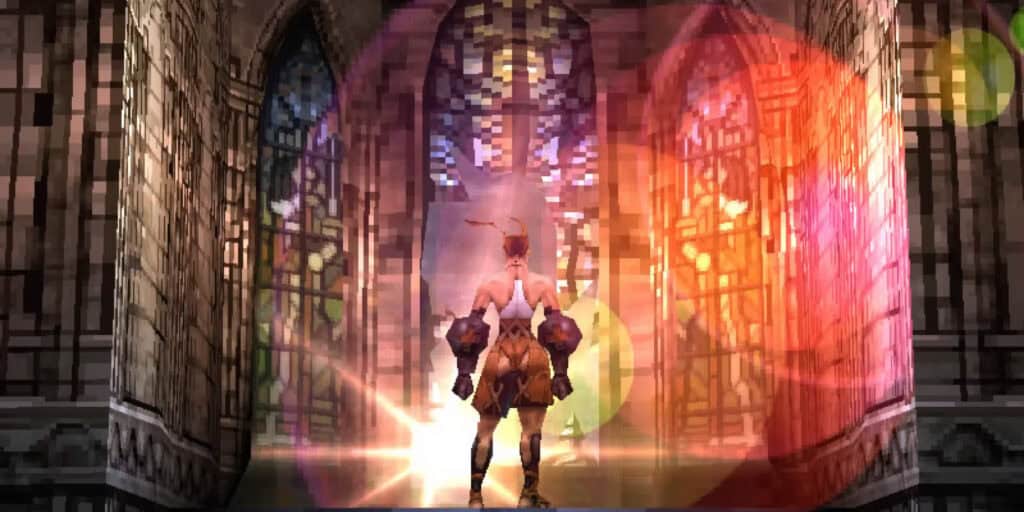
- Release Date — May 15, 2000
- Platforms — PlayStation
- Metacritic Score — 92% (Universal Acclaim)
To say that Vagrant Story is a hidden masterpiece of the PS1 might be underselling it, and the fact that more people haven’t played this incredible game is all the more reason for a remaster of it to arrive on modern consoles. Coming from Final Fantasy Tactics and Tactics Ogre mastermind Yasumi Matsuno, Vagrant Story sees many members of the Final Fantasy Tactics team reunite to create an altogether different take on the tactical RPG. Unlike the traditional, turn-based tactics of Matsuno’s previous games like Ogre Battle, Tactics Ogre, and Final Fantasy Tactics, Vagrant Story puts the player in direct control of a single hero with plenty of maneuverability around the combat arena. Players can target individual parts of enemies and even switch weapons on the fly, creating staggering potential for strategy in battles.
The dungeon-crawling combat and RPG-style character progression of Vagrant Story is a great example of the RPG genre at its best on 5th-generation hardware, but the game’s story is what will get players to stick around and see the game through to its thrilling conclusion. Like Final Fantasy Tactics, Vagrant Story takes place in the fictional realm of Ivalice and features a story laden with political intrigue, religious conspiracy, and esoteric threats. And, if that weren’t enough, Vagrant Story also happens to feature some of the best-looking visuals on the PS1, showcasing some stunning art direction and impressive environments for the characters to explore.
Crystalis
- Release Date — June 26, 2000
- Platforms — Game Boy Color
- Metacritic Score — 80% (Generally Favorable)
Not a remake or a remaster but instead a re-release, Crystalis on the Game Boy Color is essentially the same game that fans remember from the NES. However, as one of the greatest action RPGs this side of The Legend of Zelda, that alone makes Crystalis a worthy inclusion on this list thanks to its arrival on GBC bringing it to a wider audience. The one key difference that exists between the Game Boy Color version of Crystalis and its original NES version is the color palette used in the game’s visuals. Otherwise, Crystalis is a faithful re-release of one of the NES’ hidden gems.
Similar to The Legend of Zelda, action in Crystalis takes place from a top-down perspective and players have two buttons to use in combat. One button controls one of the character’s 5 elemental swords while the other is used for magic or items. Unlike Zelda, though, Crystalis‘ main character needs to switch between swords on the fly to exploit enemies’ elemental weaknesses and become more effective in combat. With an interesting story involving cryogenic sleep, nuclear war, and a distinct blend of science fiction and high fantasy, Crystalis still shines on the Game Boy Color a full decade after its original release.
Baldur’s Gate II: Shadows of Amn
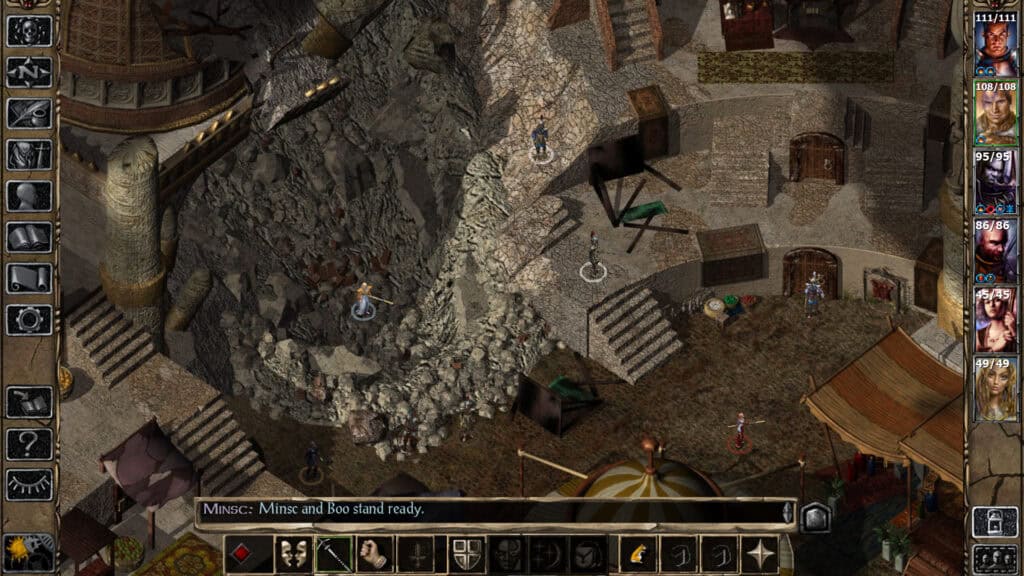
- Release Date — September 24, 2000
- Platforms — PC
- Metacritic Score — 95% (Universal Acclaim)
Although many fans prefer the original Baldur’s Gate to its sequel from 2000, there’s no denying that Baldur’s Gate II: Shadow of Amn is yet another quality game from BioWare and a fantastic continuation of the Baldur’s Gate formula adapting Dungeons & Dragons 2nd Edition rule set. The sequel picks up shortly after the events of the original Baldur’s Gate and sees the player protagonist once again drawing attention from all around the Forgotten Realms thanks to their godly heritage and power. This conflict sets the stage for the game’s antagonist, the powerful mage Jon Irenicus, to set about confronting the player and their allies in hopes of stealing their soul.
In addition to featuring many iconic locations from Dungeons & Dragons lore, Baldur’s Gate II boasts some of the more impressive writing and voice work of the era, creating a truly immersive and engaging narrative that strings players along throughout the game’s proceedings. And, with the game running on an improved version of BioWare’s Infinity Engine (which would also power Icewind Dale and Planescape: Torment) Baldur’s Gate II ends up being one of the more graphically impressive titles of the year. The gameplay and Dungeons & Dragons setting are enticing enough to pull in prospective players but it’s Baldur’s Gate II‘s incredible story and character building that make it hard to put down.
Deus Ex
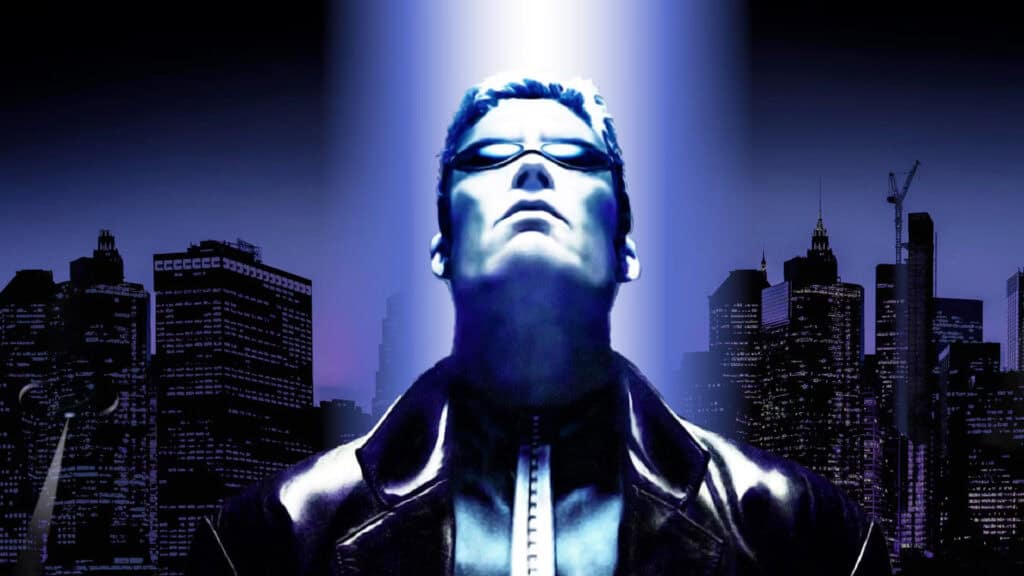
- Release Date — June 23, 2000
- Platforms — PC
- Metacritic Score — 90% (Universal Acclaim)
Warren Spector’s Deus Ex is one of the rare titles of the era that still serves as an influential game, going on to practically single-handedly spawn the first-person immersive sim genre. Although it does take place from a first-person perspective, calling Deus Ex a first-person shooter is a bit of a misnomer given how integral its RPG systems are to the core gameplay loop. Choice is the name of the game in Deus Ex, with any number of potential paths to victory available to the player based on how they build out their character and explore the game’s interactive world. While one player might choose to take an all-out approach and complete quests with guns blazing, a more tactical and methodical approach using observed information, passcodes, and subterfuge is just as viable (and maybe even more fun).
Is Deus Ex a first-person shooter? Or better yet, is it an RPG? Is it an immersive sim? The best part about Deus Ex is that it’s all three, and somehow the game manages to be an entirely cohesive experience that blends the best elements of all its genre influences. Freedom of choice and emergent gameplay aside, Deus Ex is also an example of how great futuristic dystopian RPGs can be, with a dark sci-fi plot brimming with intrigue and mystery at its center. And with plenty of variety in terms of player builds and impactful choices, no two playthroughs of Deus Ex are ever the same unless the player guides them that way.
Diablo II
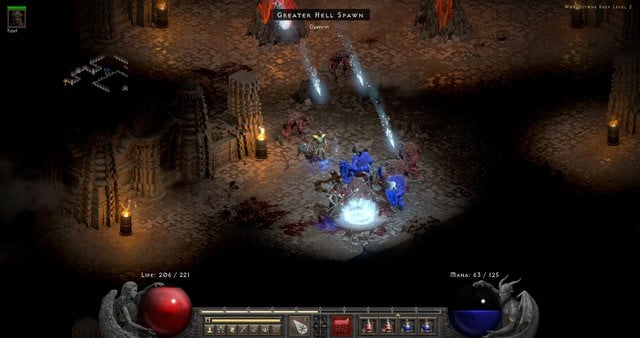
- Release Date — June 28, 2000
- Platforms — PC
- Metacritic Score — 88% (Generally Favorable)
The original Diablo is a great ARPG that establishes one of Blizzard’s most important franchises, but there’s a solid argument to be made that Diablo II perfects the formula. Even in the wake of both Diablo III and Diablo IV, there’s something so perfectly dialed in about Diablo II‘s gameplay and progression systems that seems to escape later entries in the series. And as a sequel, Diablo II expands on the core formula in the most important ways. Primary among these are the game’s new classes, which add plenty of nuance and variety to the flow of combat. Even within each of the distinct classes lie options for variation and customization to create very specific builds around core abilities and loot.
Speaking of loot, Diablo II nails the endgame and entices the player to keep going long after the credits roll on the main story through an ever-growing pool of powerful loot and newer, tougher difficulty options. Between the implementation of the series’ first true “endgame” content and a staggering amount of potential character builds it’s entirely possible for someone to spend hundreds of hours in Diablo II. And with combat this finely tuned and some of the greatest dungeons and environments in the series, any time with Diablo II is time well spent.
Icewind Dale
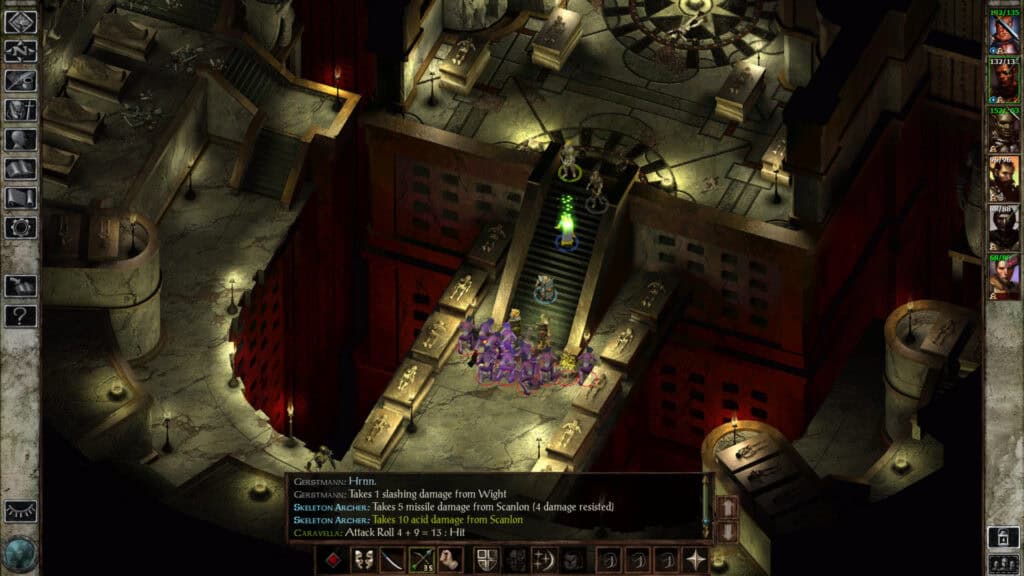
- Release Date — June 29, 2000
- Platforms — PC
- Metacritic Score — 87% (Generally Favorable)
Rather than handle development duties themselves, BioWare would lease the revamped Infinity Engine that Baldur’s Gate II is built in, to Black Isle Studios (more commonly known under their revamped title, Obsidian Entertainment) for the Dungeons & Dragons-themed CRPG Icewind Dale. Like both the Baldur’s Gate games and Planescape: Torment, Icewind Dale is another isometric CRPG with strategic and option-dense turn-based combat, taking place in the titular region of the Forgotten Realms from Dungeons & Dragons. And, like all those other games, Icewind Dale features a supremely satisfying mix of excellent writing, phenomenal quest design, and complex yet entertaining real-time-with-pause combat.
Unlike Baldur’s Gate, though, Icewind Dale gives players total agency over their adventuring party, allowing them to create not just their main player character but an entire party of 6 adventurers right at the game’s outset. Additionally, Icewind Dale‘s combat lends itself more to an ARPG-style feel, with many reviewers of the era even comparing it favorably to Diablo II as opposed to its fellow D&D contemporary of the year Baldur’s Gate II. In terms of classic CRPGs of the era, a time when the genre was at its creative peak, it doesn’t get much better than Icewind Dale.
The image featured at the top of this post is ©Wizards of the Coast Dungeons & Dragons artwork.
